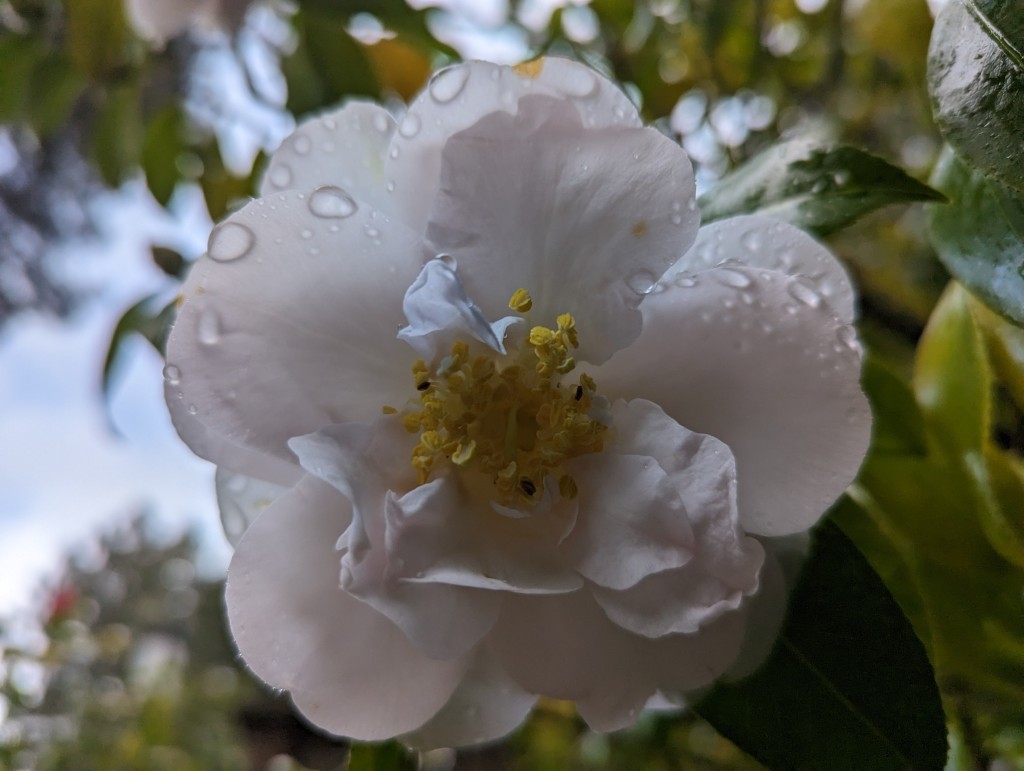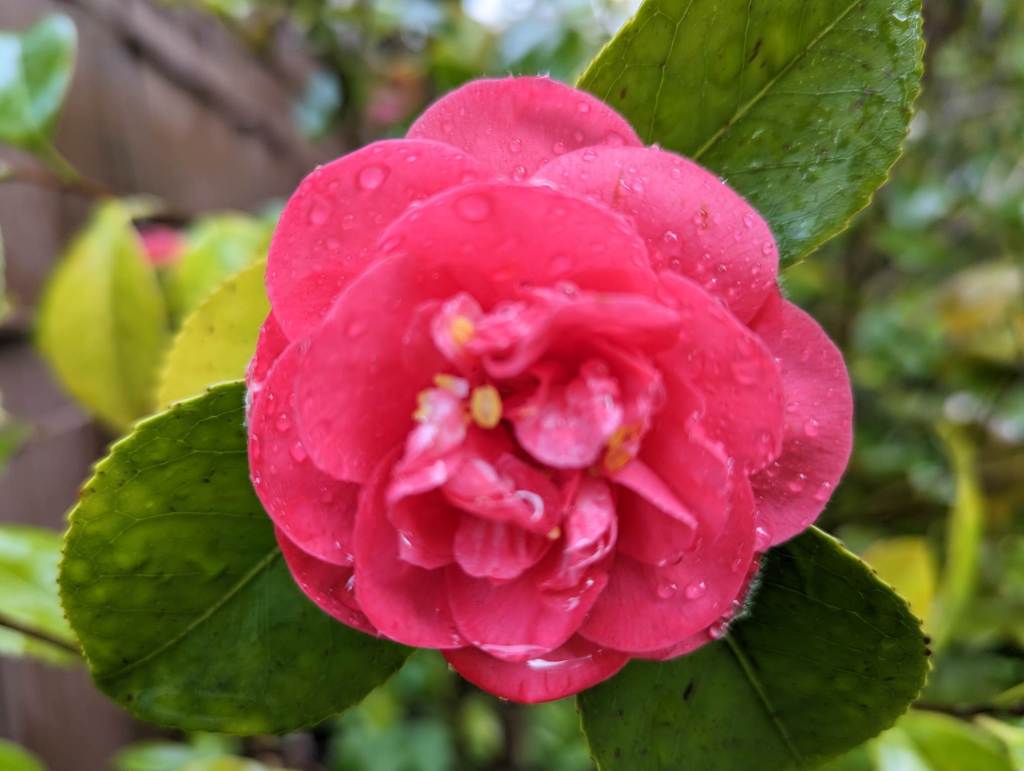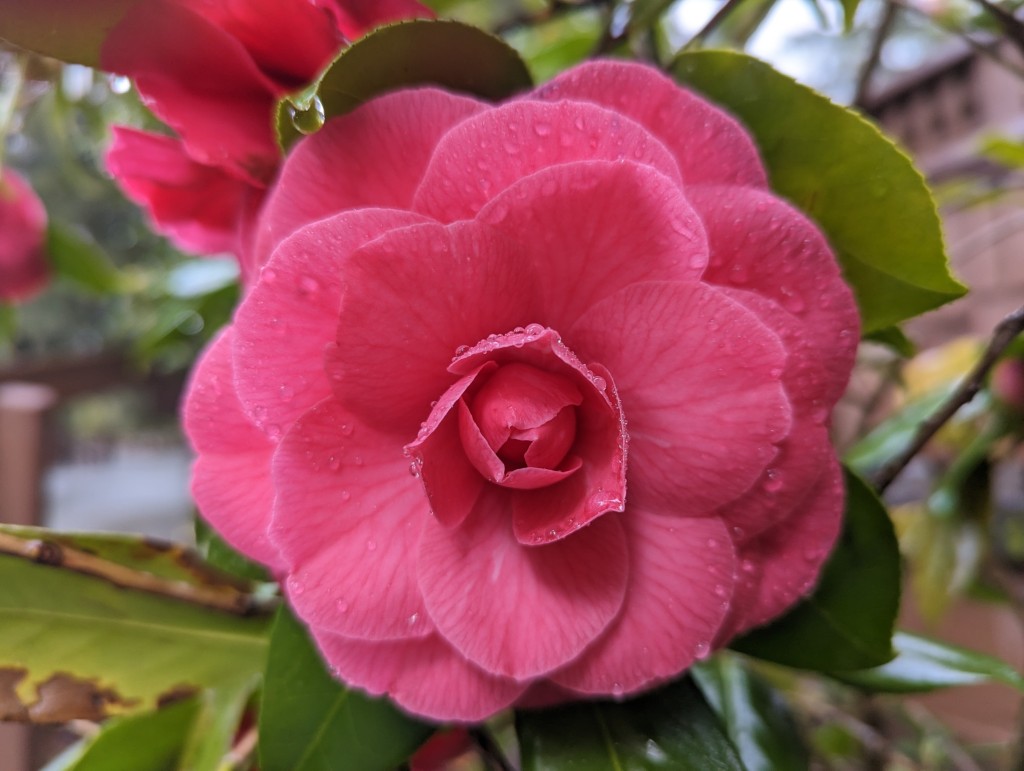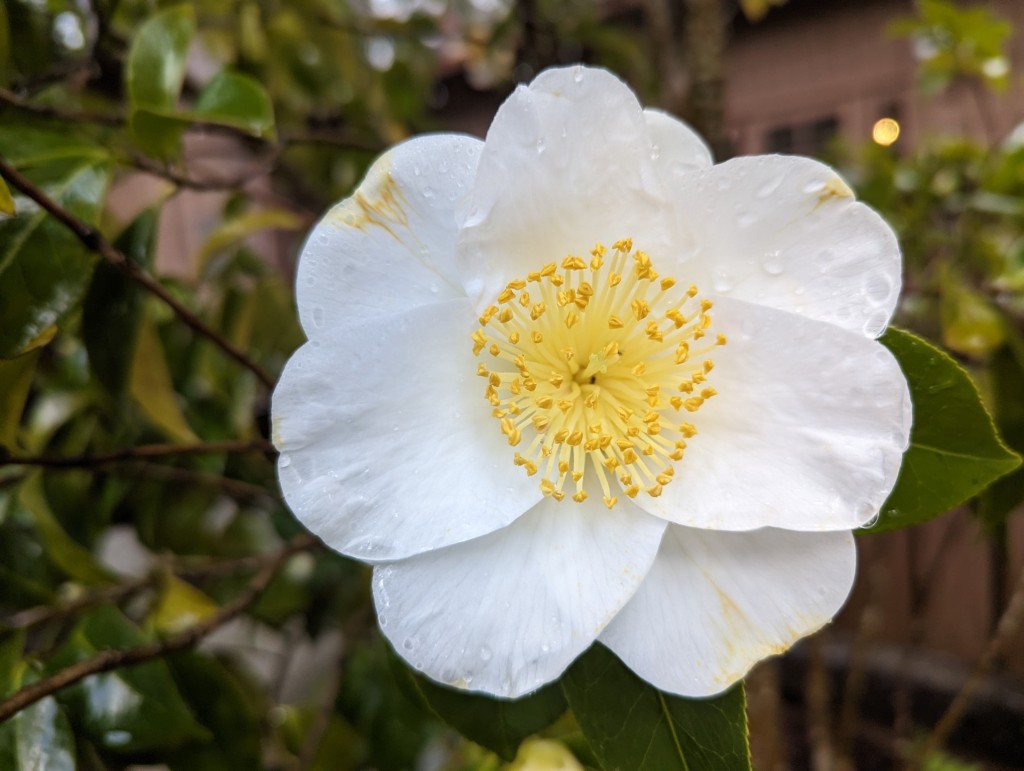All but the first of these six are Camellia japonica. They bloomed late this year, likely as a result of the exceptionally wintry winter. Also, these pictures are more than two weeks old. They likely finished blooming by now. I do not know because I am not there. Rhody, Carson and I are still on vacation in the Pacific Northwest. As these Six on Saturday post at midnight, we will begin our trip home. Pictures of our vacation would be appropriate, but are not processed yet. Besides, I do not take many pictures. Also, although these few pictures are now outdated, I did not want to waste them. These five camellias and single flowering cherry demonstrated commendable diligence by blooming after such a wintry winter.
1. Double white flowering cherry is obviously not a Camellia japonica, but happens to be my favorite of our several flowering cherries here. The tree is in rough condition though.

2. Frilly white camellia with a relatively modest staminate center may be the prettiest of the white camellias here, but does not look so pretty in this shaded picture after the rain.

3. Pinkish watermelon red camellia blooms with variable floral form. Some flowers seem to be of peony form. Some seem to be of anemone form. I have no idea what form this is.

4. Very pallid pink camellia seems to be almost white. Whiter white or pinker pink could be prettier, but its pastel color seems to be very appropriate to its distinctive floral form.

5. Pinkish watermelon red camellia resembles the color of #3 now, but normally blooms deeper red. Perhaps the unusually harsh weather last winter somehow altered the color.

6. Single white camellia with a prominently staminate center looks like a sunny-side-up egg. Camellia blight around the edges proliferated during the exceptionally rainy winter.

This is the link for Six on Saturday, for anyone else who would like to participate: https://thepropagatorblog.wordpress.com/2017/09/18/six-on-saturday-a-participant-guide/
Lovely set of camellias.
LikeLiked by 1 person
Thank you. I do not know what any of them are. Most are quite old.
LikeLike
All lovely, even the non-camellia! Safe journey home.
LikeLiked by 1 person
Thank you. We are home now. It was RAD!
LikeLike
Aah, the double white flowering cherry is beautiful. I hope the tree improves!
LikeLiked by 1 person
I do not expect it to. The bloom is exquisite, but the tree is very disfigured. Two elderly specimens were already removed nearby. Not only are they very old, but the situation that they inhabit is shadier from growing redwoods.
LikeLike
Your camellias are looking good. Mine bloomed early this year and then some buds froze from a freak cold front.
LikeLiked by 1 person
I am impressed by how resilient they are to minor frost. While in school, I believed that the Santa Clara Valley was near the edge of the range in which they would perform, as if they would not tolerate frost farther north or farther inland. Now, I notice them where winter weather gets much cooler. Of course, like yours, their bloom can be ruined by late frost, particularly if they bloom early. After the frost this last winter, I really do not think that I would like frost in other climates, where it is more prolonged and more frequent!
LikeLiked by 1 person
In the 80’s there was a really hard freeze that killed many of them. They fell out of favor for awhile. But being from the Northeast, I had to have them when I learned about their beautiful flowers that bloom in the winter.
LikeLiked by 1 person
They were a minor crop for us years ago. They are popular because they are so reliable and so easy. Winter does not mean much here.
LikeLiked by 1 person
Nice to see all the Camellias, old favorites. That is a beautiful cherry as well, do you know the variety?
LikeLiked by 1 person
No; it was here long before my time, and when the site was not so shaded by surrounding redwoods.
LikeLike